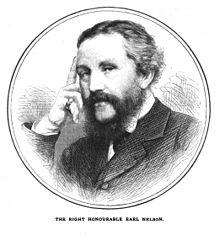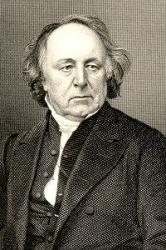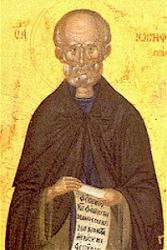Planning worship?
Check out our sister site, ZeteoSearch.org,
for 20+ additional resources related to your search.
- |
User Links
Person Results
E. J. Hopkins

1818 - 1901 Person Name: Edward J. Hopkins Scripture: Revelation 4:8 Composer of "ST. ATHANASIUS" in Church Hymnal, Mennonite Dr Edward John Hopkins MusDoc United Kingdom 1818-1901. Born at Westminster, England, the son of a clarinetist with the Royal Opera House orchestra, he became an organist (as did two of his brothers) and a composer. In 1826 he became a chorister of the Chapel Royal and sang at the coronation of King William IV in Westminster Abbey. He also sang in the choir of St. Paul’s Cathedral, a double schedule requiring skill and dexterity. On Sunday evenings he would play the outgoing voluntary at St. Martin’s in-the-field. He left Chapel Royal in 1834 and started studying organ construction at two organ factories. He took an appointment at Mitcham Church as organist at age 16, winning an audition against other organists. Four years later he became organist at the Church of St. Peter, Islington. In 1841 he became organist at St. Luke’s, Berwick St., Soho. Two Years later he was organist at Temple Church, which had a historic organ (built in 1683). He held this position for 55 years. In 1845 he married Sarah Lovett, and they had four sons and five daughters. He was closely associated with the Bach Society and was organist for the first English performances of Bach’s St. Matthew Passion. In 1855 he collaborated with Edward Rimbault publishing “The organ, its history and construction” (3 editions 1855-70-77). In 1864 he was one of the founders of the “College of organists”. In 1882 he received an honorary Doctorate of Music from the Archbishop of Canterbury. He composed 30+ hymn tunes and some psalm chants, used by the Church of England. He died in London, England.
John Perry
E. J. Hopkins
Horatio Nelson

1823 - 1913 Person Name: Horatio Bolton Nelson, 1823-1913 Scripture: Revelation 4:8-11 Author (sts. 1-10, 12-13, 15-23, 25-26, 28) of "By All Your Saints in Warfare" in Lutheran Service Book Earl Nelson was born in 1823. He was educated at Eton, and Trinity College, Cambridge. He is a relative of England's greatest naval hero. An active layman, he has been of service to the Church in many of her religious and benevolent enterprises. In hymnology he has taken a prominent position; his own hymns are most creditable, and he has been foremost in compiling the Sarum Hymnal, a work of the best character. This hymnal was compiled in 1857, with the assistance of John Keble, at the request of the Bishop of Salisbury. Its first title was The Salisbury Hymn Book. Its popularity was very great. In 1868 it was revised and is now known as The Sarum Hymnal. Earl Nelson has also published a few other works, mostly of a devotional character.
--Annotations of the Hymnal, Charles Hutchins, M.A., 1872
Nelson, Horatio, 3rd Earl Nelson, son of Mr. Thomas Bolton, of Burnham, Norfolk (nephew of the celebrated Admiral Viscount Nelson, whose name he assumed on succeeding to the title as 2nd Earl); was born Aug. 7, 1823, and educated at Eton, and at Trinity College, Cambridge. He succeeded to the title Nov. 1, 1835. In 1857 he edited the Salisbury Hymn-Book. In this work he was assisted by J. Keble, who re-wrote some of the older hymns and translated others from the Latin. This collection was remodelled and published as the Sarum Hymnal in 1868. In the preparation of this work Earl Nelson was assisted by the Revs. J. R. Woodford (afterwards Bishop of Ely) and E. A. Dayman. In 1864 he published his Hymn for Saint’s Day, and other Hymns. In this appeared the hymn by which he is most widely known, “From all Thy saints in warfare, for all Thy saints at rest" (p. 398, ii.). He has also published A Form of Family Prayer, with Special Offices for the Seasons, 1852; and A Calendar of Lessons for Every Day in the Year, 1857. He was also an active member of the Home Reunion Society, and wrote extensively on the subject.
--John Julian, Dictionary of Hymnology (1907)
Horatio Nelson
Harlyn J. Kuschel
b. 1945 Person Name: Harlyn J. Kuschel, b. 1945 Scripture: Revelation 4:8-11 Author (st. 11) of "By All Your Saints in Warfare" in Lutheran Service Book
Harlyn J. Kuschel
Gregory J. Wismar
b. 1946 Person Name: Gregory J. Wismar, b. 1946 Scripture: Revelation 4:8-11 Author (sts. 14, 24, 27) of "By All Your Saints in Warfare" in Lutheran Service Book
Gregory J. Wismar
Paul Bunjes
1914 - 1998 Person Name: Paul G. Bunjes, 1914-98 Scripture: Revelation 4:8-11 Arranger of "KING'S LYNN" in Lutheran Service Book Paul G. Bunjes (b. September 27, 1914; d. June 27, 1998) was an organist, author, and organ designer. He wrote The Praetorius Organ (four volumes), numerous articles for periodicals, and was an accomplished composer and arranger. He was a major contributor to the Lutheran Book of Worship (1978) and Lutheran Worship (1982). Bunjes was Professor of Music at Concordia University for many years.
Laura de Jong
Paul Bunjes
Arthur Sullivan

1842 - 1900 Person Name: Arthur Seymour Sullivan, 1842-1900 Scripture: Revelation 4:6-11 Composer of "BISHOPGARTH" in Singing the Faith Arthur Seymour Sullivan (b Lambeth, London. England. 1842; d. Westminster, London, 1900) was born of an Italian mother and an Irish father who was an army bandmaster and a professor of music. Sullivan entered the Chapel Royal as a chorister in 1854. He was elected as the first Mendelssohn scholar in 1856, when he began his studies at the Royal Academy of Music in London. He also studied at the Leipzig Conservatory (1858-1861) and in 1866 was appointed professor of composition at the Royal Academy of Music. Early in his career Sullivan composed oratorios and music for some Shakespeare plays. However, he is best known for writing the music for lyrics by William S. Gilbert, which produced popular operettas such as H.M.S. Pinafore (1878), The Pirates of Penzance (1879), The Mikado (1884), and Yeomen of the Guard (1888). These operettas satirized the court and everyday life in Victorian times. Although he composed some anthems, in the area of church music Sullivan is best remembered for his hymn tunes, written between 1867 and 1874 and published in The Hymnary (1872) and Church Hymns (1874), both of which he edited. He contributed hymns to A Hymnal Chiefly from The Book of Praise (1867) and to the Presbyterian collection Psalms and Hymns for Divine Worship (1867). A complete collection of his hymns and arrangements was published posthumously as Hymn Tunes by Arthur Sullivan (1902). Sullivan steadfastly refused to grant permission to those who wished to make hymn tunes from the popular melodies in his operettas.
Bert Polman
Arthur Sullivan
Thomas Binney

1798 - 1874 Person Name: Thomas Binney, 1798-1874 Scripture: Revelation 4:5 Author of "Eternal Light! Eternal Light!" in Common Praise Binney, Thomas, D.D., b. at Newcastle-on-Tyne, in 1798, and educated at Wymondley College, Hertfordshire. Entering the ministry, he was successively pastor of a congregation at Bedford, an Independent Chapel at Newport, Isle of Wight, and of the King's Weigh House Chapel, London, 1829. The University of Aberdeen conferred upon him the LL.D. degree. He died Feb. 23, 1874. His works, exceeding 50 in number, include Life of the Rev. Stephen Morell, 1826; Money, 1864; St. Paul, his Life and Ministry, &c. He wrote a few hymns, including "Eternal Light! Eternal Light,” and "Holy Father, Whom we praise.” (Close of Service.)
--John Julian, Dictionary of Hymnology (1907)
Thomas Binney
Job Hupton
1762 - 1849 Person Name: J. Hupton, 1762-1849 Scripture: Revelation 4:8-11 Author of "Come, ye faithful, raise the anthem" in Common Praise Hupton, Job, was born in 1762, at a small village near Burton-on-Trent. He was brought up to work at a forge, but after his conversion through the preaching of the Rev. John Bradford, one of Lady Huntingdon's ministers, whom he heard at Walsal, he began to preach; and after a few months at Trevecca College, was himself employed by Lady Huntingdon for some years as one of her itinerating ministers. Having changed his views on the subject of Baptism, he became, in 1794, pastor of the Baptist church at Claxton, in Norfolk, where he laboured with much success for many years. He died Oct. 19, 1849.
Hupton wrote much both in prose and verse, his compositions appearing in the Gospel Magazine under the signatures of “Ebenezer," "Eliakini, and "J. H—n." His prose writings were collected and published in 1843, under the title The Truth as it is in Jesus. In 1861, D. Sedgwick reprinted his Hymns & Spiritual Poems, with a brief memoir.
Of his 22 hymns three only are in common use:—
1. Come ye saints and raise an anthem. Praise.
2. Glorious, high, and lofty One. The Dominion of God. In Gospel Magazine, June, 1806.
3. Jesus, Omnipotent to save. Lent.
The first of these, "Come ye," &c. (q.v.), in its altered form by Dr. Neale, is in extensive use, the rest ore in a few hymn-books only. Hupton had a bold and vigorous imagination and great command of language. If in early life he had enjoyed better educational advantages, he would probably have attained to eminence as a poet. [Rev. W. R. Stevenson, M. A.]
-- John Julian, Dictionary of Hymnology
Job Hupton
St. Joseph the Hymnographer

810 - 886 Person Name: St Joseph the Hymnogrpher, d. 883 Scripture: Revelation 4:8 Author (attributed to) of "Stars of the morning, so gloriously bright" in Common Praise Joseph, St., the Hymnographer. A native of Sicily, and of the Sicilian school of poets is called by Dr. Neale (in his Hymns of the Eastern Church), Joseph of the Studium, in error. He left Sicily in 830 for a monastic life at Thessalonica. Thence he went to Constantinople; but left it, during the Iconoclastic persecution, for Rome. He was for many years a slave in Crete, having been captured by pirates. After regaining his liberty, he returned to Constantinople. He established there a monastery, in connection with the Church of St. John Chrysostom, which was filled with inmates by his eloquence. He was banished to the Chersonese for defence of the Icons, but was recalled by the empress Theodora, and made Sceuophylax (keeper of the sacred vessels) in the Great Church of Constantinople, through the favour of the patriarch Ignatius. He stood high also in the favour of Photius, the rival and successor of Ignatius, and accompanied him into banishment. He died at an advanced age in 883. He is commemorated in the Calendars of the Greek Church on April 3rd. He is the most voluminous of the Greek hymnwriters. There are more than two hundred Canons under the acrostic of his name, in the Menaea. Cardinal Pitra says he is reported to have composed a thousand. There is some difficulty in distinguishing his works from those of the brother of Theodore of the Studium, Joseph of Thessalonica. This latter poet, and not the more celebrated Joseph the Hymnographer, was named Joseph of the Studium. [Rev. H. Leigh Bennett, M.A.]
-- John Julian, Dictionary of Hymnology (1907)
See also in:
Wikipedia
St. Joseph the Hymnographer
Juan Luis García
1935 - 1997 Scripture: Revelation 4:8 Composer of "SANCTUS" in El Himnario
Juan Luis García


 My Starred Hymns
My Starred Hymns


